As advertised earlier, last Wednesday night saw the Spokes Canterbury AGM being held at CPIT, and over 30 people were present to hear some interesting happenings in the worlds of cycling advocacy and local politics.
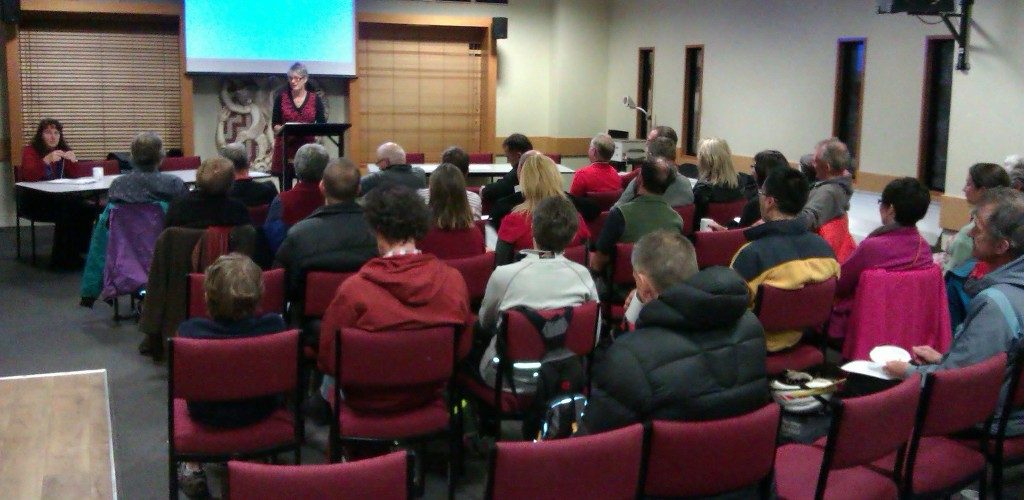
The evening started with the formalities of the AGM. Outgoing Chair Clare Simpson gave a very thorough review of the busy year that Spokes Canterbury has had dealing with submissions, stakeholder meetings, media comment, promotions, and other activities aimed at making a more cycle-friendly city. Given the exciting proposals in prospect for the future here in Chch, Spokes can probably count this as one of their more successful years! Clare also provided a fascinating insight into the world of Christchurch cycling advocacy circa 1900 – this showed that some concerns (e.g. lack of facilities, poor road user behaviour) haven’t really changed in over 100 years!
Clare is stepping down from the Chair to focus on her house repair issues, and former Chair Keith Turner kindly agreed to step up to the plate again. It was a bittersweet day for Keith, as he also got the official word that Kendal School (where he is principal) is to close – this is the school with the fantastic cycle track on site for its pupils and community.
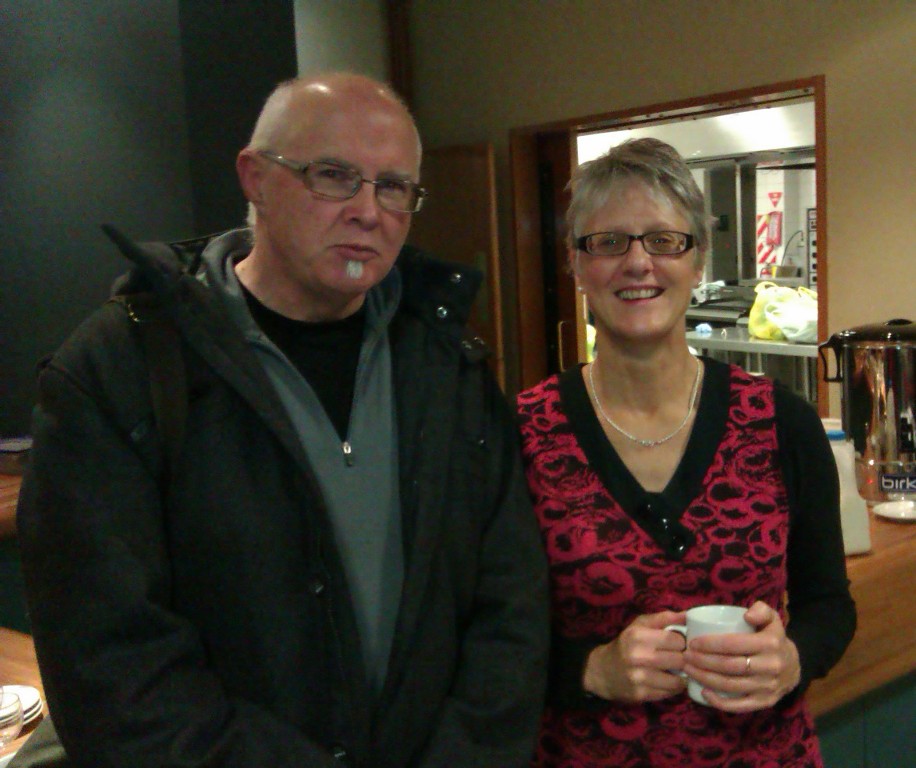
The evening was also the opportunity for Spokes to present the preliminary work from its Bicycle User Mapping Project, or “BUMP”. The idea of this is a citizens-initiated “desire map” of cycling routes for the city, from which to then engage Council and local communities about how to achieve these. A couple of internal Spokes workshops have produced the preliminary map presented, and now attention turns to how to use this valuable mapping base. It is interesting to note that much of it mirrors the planned cycleway networks by the Chch City Council, but there are at least a couple of routes where the group so far has begged to differ… More to come on this interesting project at a later date.

After that it was time to hear from four invited City Councillors. Spokes was fortunate to get Crs Sue Wells, Jimmy Chen, Yani Johanson, and Glenn Livingstone to come along and provide some thoughts about cycling, based on pre-supplied questions and additional questions on the night. This was quite instructive to hear from some of those who are standing again for Council and may be responsible for implementing the most exciting cycling developments this city has ever had.
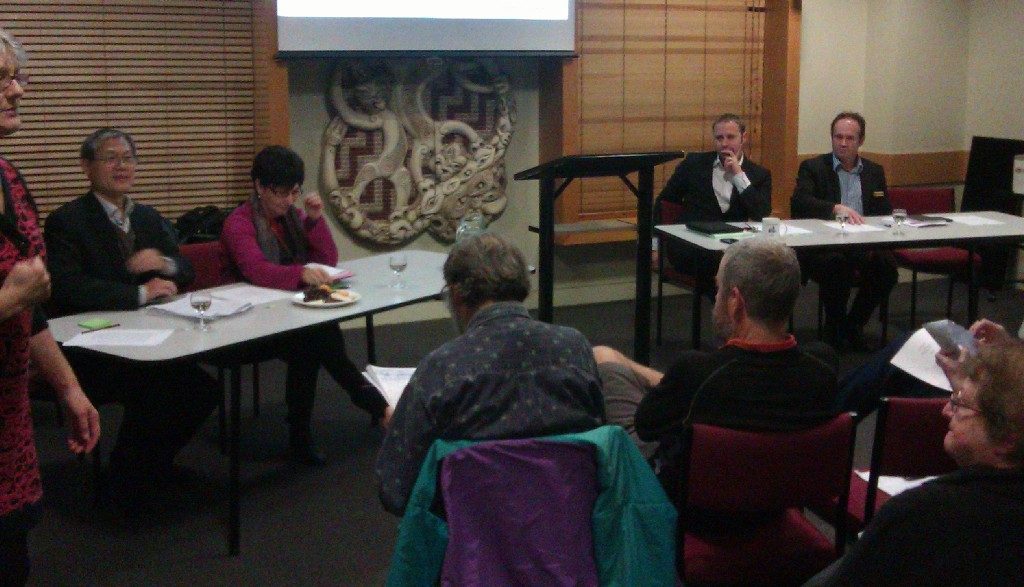
Sue Wells described herself as a “90-10 cyclist” – in the summer she bikes 90% of the time and drives 10%; in the winter it’s the other way around. She noted her concern that many cyclists are invisible to drivers and don’t often want to do anything to improve that (although it has to be said that much of the evidence suggests that even riders in full hi-vis are routinely being ignored by motorists). Sue felt that the Council’s relationship with Spokes was much improved in the past few years and less confrontational – part of this she put down to a move away from multiple Council transport strategies that were often at odds with each other. At the same time she also felt there was a “sea change” in the level of support for cycling within Council and that was being reflected in some of the recent decisions like the planned $69m for cycleways. Interestingly, she was less concerned about how many people switched to cycling, so long as there was a shift away from motor vehicles – whether they were walking, biking, scooting, skating or whatever didn’t matter to her.
Jimmy Chen admitted that he did not cycle but expressed a strong support for cycling provision that seemed very genuine. He highlighted the importance of the Christchurch Transport Strategic Plan over the next 30 years and how it strongly supports a more cycle-friendly city. In his role as part of the Council’s Environment & Infrastructure Cm’tee he has been a strong supporter of the new Cycle Design Guidelines, the proposed $69m cycleway network funding, and the recent decision to continue to allow for cycle lanes on main roads in addition to the major cycleway network. He reminded the audience that the Council was also a major player in trying to achieve the Regional Land Transport Strategy targets, which included one to double the amount of active transport hours per person by 2042.
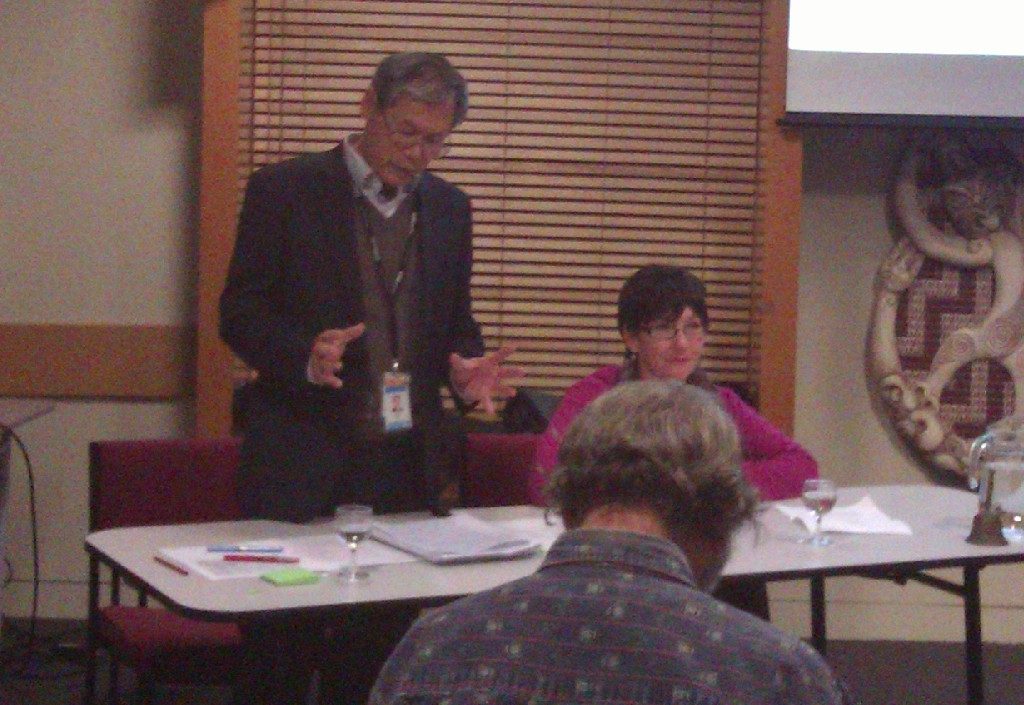
Glenn Livingstone described himself as a recreational cyclist in the main. His support for the planned new cycleway initiatives stems from concern about existing facilities like the shared bus/bike lanes around the city. He also liked the idea behind the citizens-initiated BUMP network and encouraged more work on that. In looking forward, he felt that Sydney’s target of 10% of trips by bike by 2015 seemed like a good one to emulate here, and noted that the time is definitely now to provide for safe cycling routes.
Yani Johanson has always been a strong supporter of active transport, although he noted that usually he roller-blades to get around. Interestingly he said that he didn’t support the Chch Transport Strategic Plan in its final form, because it didn’t move fast enough to shift to more sustainable transport. In the same vein he wondered why the planned cycleways had to take five years to complete; by rearranging the timing of other major project funding (e.g. certain stadiums…) he felt that they could be completed in three years. Yani also raised his concerns about the current process with city street rebuilds via SCIRT, which has largely been a “like for like” replacement to date without much opportunity for improvements like cycling provision. He would like to see a target of 30% of commuting by bike by 2030 with various intermediate targets along the way.
There were a few questions from the floor that were also tackled briefly; Spokes plan to post Councillors’ considered responses to these on their website in due course. On the vexing question of cycling provision vs car parking, Cr Wells felt the key was to pick the right cycling route, while Cr Johanson said we needed to plan local areas better in the first place. Lower speed limits were given a lukewarm reception unless street design reinforced the lower speed environment – Cr Johanson said that the 40km/h Charleston trial area had been a failure because of insufficient low-speed design. In regards to the current school closures, Cr Livingstone said that the time is right to provide safe routes to schools now further away, and maybe that’s a concession the Government should be providing. Cr Wells also noted that the E&I Cm’tee are starting to ask the question about providing “betterment” (e.g. new cycleways) as part of SCIRT repairs.
That’s all the main notes I jotted down from the Councillors’ session; I’d be interested if other attendees picked up any other impressions (the Councillors also stayed on to chat afterwards as well). Although some issues were covered a bit “once-over-lightly”, all in all it was a useful session to get an insight into what some of our elected members are thinking as we look forward to a more cycle-friendly city.
What do you think about our Councillors’ efforts towards cycling in the city?

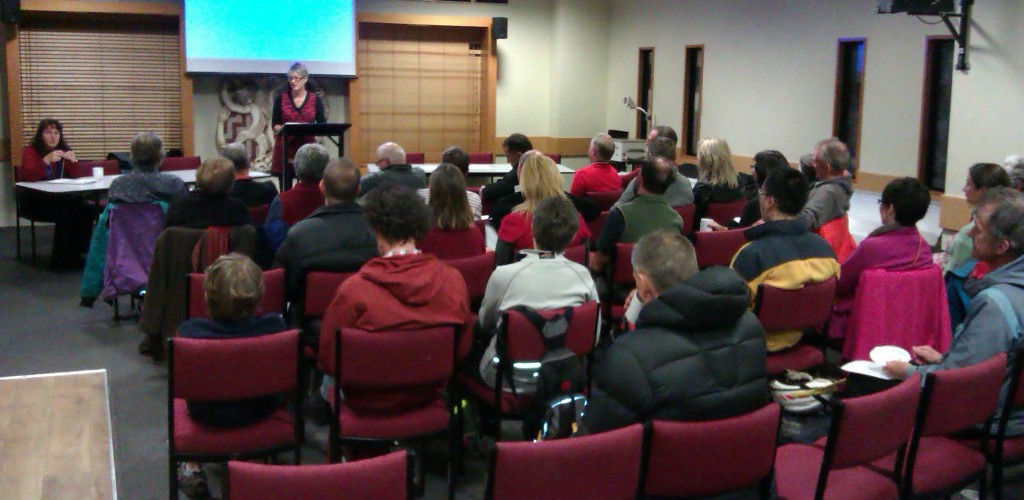
Hi Lennyboy
Pleased be assured that as incoming chair I will sometimes smile and look less grumpy.
Keith Turner
For the record, I’ve NEVER seen Keith looking grumpy. It must have been something I said at the time … like, “I wonder if anyone has let down your tyres while we’ve been at the AGM?”